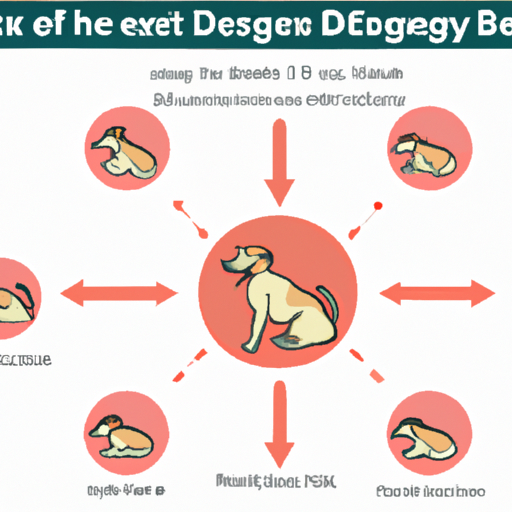Understanding Your Dog’s Estrous Cycle
As a diligent and caring pet parent, it’s important for you to understand your dog’s health. One key aspect of this is grasping the estrous cycle, commonly known as “heat” in female dogs. This biological process, much like human menstruation, is the time when your female dog is receptive to mating.
Typically, female dogs experience their first cycle anywhere between six months to a year of age, though this varies depending on breed and size. Smaller breeds may start earlier, while larger breeds may not experience their first heat until they are eighteen months or even two years old.
Recognizing When Your Dog Is In Heat
Your watchful eye and caregiving instincts might pick up on several signs that your dog is in heat. Here are some key signs:
- Swelling of the Vulva
- Changes in Behavior
- Spotting or Discharge
- Frequent Urination
These changes often follow a predictable pattern across four stages:
- Proestrus: This stage lasts for about nine days. Your dog may show no interest in mating, but physical signs like a swollen vulva and spotting might be evident.
- Estrus: This is the “heat” stage, lasting for nine days on average. Your dog is now receptive to mating. Discharge may turn a lighter color, and your dog’s behavior may change.
- Diestrus: Lasting around two months, this is the pregnancy stage. Whether your dog is pregnant or not, her body will behave as if she is.
- Anestrus: This is the resting stage, lasting around six months before the whole cycle starts again.
The Frequency of Heat Cycles
You might be wondering, ‘how often do female dogs go into heat?’ It’s a good question, and the answer varies. On average, most dogs will have two cycles per year, roughly six months apart. However, this is not a hard and fast rule. Smaller breeds might go into heat three to four times a year, while larger breeds might only cycle once every 12 to 18 months.
The Importance of Spaying
As a responsible caregiver, you should consider spaying your dog. Spaying is the surgical removal of reproductive organs in female dogs. The procedure not only prevents unwanted pregnancies but also eliminates the risk of uterine, ovarian, and mammary cancer. This table outlines the benefits and risks:
| Benefits of Spaying | Risks of Spaying |
|---|---|
| Prevents unwanted pregnancies | Surgical risks |
| Eliminates risk of uterine, ovarian, and mammary cancer | Can lead to weight gain |
| Can help with certain behavioral issues | Changes in coat texture |
FAQ
Q: Can I walk my dog when she’s in heat?
A: Yes, but keep her on a leash and be aware of any male dogs in the area.
Q: How long does a dog stay in heat?
A: The entire cycle lasts about two months, but the ‘heat’ stage lasts for about nine days on average.
Q: Is it harmful for a dog to never go into heat?
A: No, it’s not harmful. In fact, spaying before the first heat cycle can prevent certain health risks.
Q: Can I get my dog spayed while she’s in heat?
A: It’s generally safer to wait until the heat cycle has ended before spaying.
Q: How can I comfort my dog when she’s in heat?
A: Keep her environment calm and comfortable. Make sure she has a quiet space to rest, and consider using doggy diapers to manage spotting.
Remember, as a caregiver, your understanding and attention to your dog’s health is critical. By recognizing their heat cycles and considering spaying, you can ensure your furry friend stays healthy and happy.



